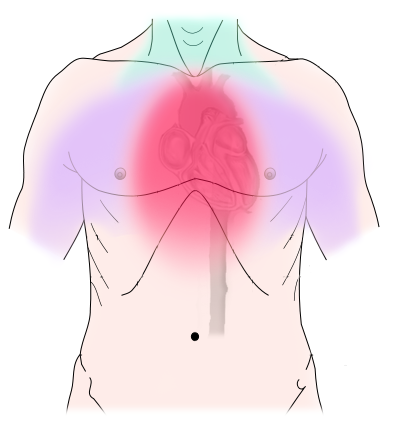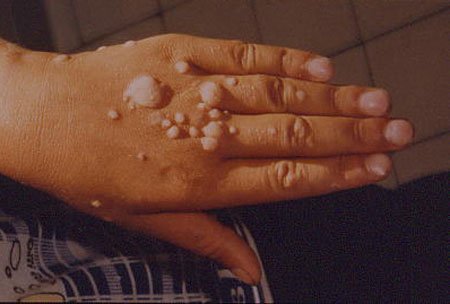Scabies is a highly contagious skin condition that affects millions of people globally. It’s caused by a tiny mite called Sarcoptes scabiei that burrows into the skin, leading to intense itching, irritation, and skin rashes. Despite its prevalence, scabies is often misunderstood, and many people are unaware of its causes, symptoms, and treatment options. In this article, we’ll explore everything you need to know about scabies, how to prevent it, and the best ways to treat this uncomfortable condition.
What is Scabies?
Scabies is a skin infection caused by the infestation of microscopic mites known as Sarcoptes scabiei. These mites burrow into the top layer of the skin, where they live, feed, and lay eggs. The burrowing process leads to severe itching and red rashes, often worsening during the night.
Scabies is primarily spread through prolonged skin-to-skin contact, making it especially common in crowded living conditions such as dormitories, nursing homes, and childcare centers. Although it’s not an indicator of poor hygiene, scabies can easily spread in environments where close contact is frequent.
Causes of Scabies

Scabies is caused by direct contact with the scabies mite. The main methods of transmission include:
- Prolonged Skin Contact: Direct and prolonged skin-to-skin contact is the most common way scabies is transmitted. This could occur through hugging, hand-holding, or close physical interaction.
- Contaminated Bedding and Clothing: In some cases, scabies can spread through infested clothing, bedding, or towels, particularly in cases of crusted scabies, a more severe form of the condition.
- Crowded Living Conditions: Scabies thrives in environments where individuals are in close quarters, such as schools, shelters, and care facilities. These environments increase the likelihood of transmission.
Symptoms of Scabies

Scabies symptoms typically develop within four to six weeks of exposure in individuals with no previous exposure. For those previously affected, symptoms may appear within one to four days. Common symptoms include:
- Intense Itching: One of the hallmark symptoms of scabies is severe itching, especially at night. The itching is caused by the body’s allergic reaction to the mites and their waste.
- Red Rashes and Sores: The mites burrow into the skin, creating red, pimple-like rashes. The rashes are often found between the fingers, on the wrists, elbows, and around the waistline.
- Thin Burrow Tracks: Upon closer inspection, you may notice tiny burrow tracks in the skin. These tracks are made by the mites as they move beneath the skin’s surface. The tracks appear as thin, irregular lines that are often red or grayish.
- Sores from Scratching: Persistent itching and scratching can lead to sores and skin infections. In some cases, the scratching can cause bacterial infections, requiring further medical attention.
Diagnosing Scabies
If you suspect that you have scabies, it’s important to consult a healthcare provider for a proper diagnosis. A physical examination is usually enough for diagnosis, but in some cases, a skin scraping may be taken to confirm the presence of mites or eggs under a microscope.
Treatment for Scabies
Treating scabies involves eliminating the mites from the skin and managing the symptoms. Several options are available for treating scabies, including:
1. Prescription Medications
The most common treatment for scabies is the use of prescription medications known as scabicides, which kill both mites and their eggs. These include:
- Permethrin Cream: A topical cream that’s applied over the entire body and left on for 8 to 14 hours before washing off. It’s effective in killing the mites and eggs.
- Ivermectin: An oral medication that can be used for more severe cases or when topical treatments are ineffective. Ivermectin is also often used for crusted scabies.
2. Over-the-Counter Remedies
In mild cases, over-the-counter antihistamines or hydrocortisone creams may help relieve itching and irritation, although they don’t kill the mites.
3. Treatment for Secondary Infections
Scratching can lead to bacterial infections such as impetigo. In such cases, antibiotics may be prescribed to clear the infection.
4. Decontaminating Your Environment
Since scabies can survive for up to three days on surfaces, it’s important to thoroughly clean and disinfect your environment. Wash all bedding, clothing, and towels in hot water and dry them at high temperatures. For items that can’t be washed, sealing them in a plastic bag for at least 72 hours can help kill the mites.
Preventing Scabies
While scabies can spread easily, there are several steps you can take to prevent infection:
- Avoid Close Contact: Since scabies is highly contagious through skin contact, avoiding close physical contact with an infected person is crucial.
- Clean and Disinfect: Regularly washing bedding, clothing, and towels in hot water can prevent the spread of scabies. It’s also important to vacuum and clean the living environment to remove mites from surfaces.
- Treat All Household Members: Scabies can spread quickly within households. If one person is diagnosed with scabies, it’s recommended that everyone in the household be treated at the same time, even if they are not showing symptoms.
Common Myths About Scabies
Despite being a well-known skin condition, there are still many misconceptions about scabies. Here are some myths debunked:
- Myth 1: Scabies Only Affects Those with Poor Hygiene
Scabies affects people from all walks of life, regardless of personal hygiene. Cleanliness does not prevent scabies from spreading or from infecting individuals. - Myth 2: Scabies Can Be Cured Without Medical Treatment
Without proper treatment, scabies can persist and worsen. Home remedies may provide temporary relief from itching, but they won’t eliminate the mites or eggs. - Myth 3: Pets Can Transmit Scabies to Humans
Scabies in humans is caused by the Sarcoptes scabiei mite, which is different from the mite that affects pets. While animals can suffer from their own form of scabies (called mange), these mites are species-specific and do not infect humans.
Living with Scabies
While scabies can be uncomfortable, it is a treatable condition. With the right treatment plan, you can eliminate the mites and alleviate the symptoms. It’s important to follow your healthcare provider’s instructions carefully, complete the entire course of treatment, and take steps to prevent re-infestation.
In severe cases, such as crusted scabies, ongoing medical care may be necessary to fully eradicate the mites. With appropriate care and hygiene practices, scabies can be managed effectively.
Conclusion
Scabies is a highly contagious skin condition, but with proper understanding, diagnosis, and treatment, it can be effectively managed and eliminated. Early detection and immediate treatment are essential in preventing the spread of scabies to others. If you suspect you have scabies, contact a healthcare provider for guidance on the most effective treatment options.





